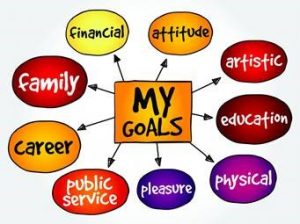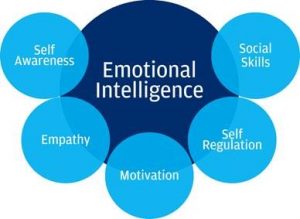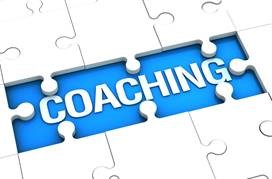MANAGING CONFLICT
 When you get a group of people working together in an office day after day, conflicts are going to happen. Workplace conflict is a major issue that needs to be effectively addressed by leaders before it creates a toxic environment. If left unaddressed, it can lead to a lack of productivity, increased absenteeism and eventually higher employee turnover. There are so many reasons why conflict occurs in the workplace, including: poor management, unclear job roles, personality clashes, inadequate training, lack of opportunity and so many others.
When you get a group of people working together in an office day after day, conflicts are going to happen. Workplace conflict is a major issue that needs to be effectively addressed by leaders before it creates a toxic environment. If left unaddressed, it can lead to a lack of productivity, increased absenteeism and eventually higher employee turnover. There are so many reasons why conflict occurs in the workplace, including: poor management, unclear job roles, personality clashes, inadequate training, lack of opportunity and so many others.
While it’s a natural human tendency to avoid uncomfortable conversations with others, that strategy won’t work in the long term. It’s up to managers to give high priority to handling conflict in the office and ensure all employees are committed to solving issues. Managers need to instill in their staff that disagreements happens, but mutual respect is key. If handled correctly, conflicts can result in growth and greater understanding within the workplace. Here are a few suggestions to make sure that happens:
- Tackle issues early. Waiting until a conflict escalates and turns into an unmanageable issue only makes problem solving more challenging.
- Find out the root cause of the problem. Ask open-ended questions that provide people a chance to talk and feel valued. Dialog is key!
- Take a look how you manage. Before you can manage others, take a look at yourself and how you handle conflict. Do you act defensively? What kind of body language do you use?
- Act as a referee rather than a judge. As a manager, it’s important to remain impartial when conflicts arise. Meet with employees individually and then together in an uninterrupted space. Once employees are talking through their differences, let them work it out and don’t get drawn into taking sides.
- Consider conflict resolution training. Many managers don’t know how to effectively resolve conflicts because they simply haven’t had the proper training. It can really go a long way towards making conflict resolution more effective for all parties.
Conflict is an unavoidable part of workplaces, but it’s how these conflicts are handled that counts. Leah M Joppy and Associates has worked with many organizations to teach them how to effectively handle conflicts. We give you the tools to diffuse issues quickly and effectively in a manner where all employees feel valued and heard. For more information, contact us at 301-670-0051 or email leah@lmja.com.
SETTING GOALS
 A new year is upon us and it’s a time that naturally lends itself to reflection and thinking about what we want to achieve in the future. Setting goals are an important part of this process. Goals give us a sense of purpose and meaning, point us in the direction we want to go and help us become more interested and engaged. All of this adds up to greater overall happiness in our lives!
A new year is upon us and it’s a time that naturally lends itself to reflection and thinking about what we want to achieve in the future. Setting goals are an important part of this process. Goals give us a sense of purpose and meaning, point us in the direction we want to go and help us become more interested and engaged. All of this adds up to greater overall happiness in our lives!
Aristotle said, “Well begun is half done.” In terms of goals, he’s absolutely right. That’s why we need to pay careful attention to how we set our goals and move towards accomplishing them. Here are few ways to get started:
Set A Goal That Motivates You
Goal achievement requires commitment, so it’s important that you set goals that you’re actually motivated to accomplish. These are high priority areas of YOUR life, not your spouse, children, co-workers, etc. Start by writing down why your particular goal is valuable and meaningful to you. If you were to share your goal with someone, how would you convince him or her that it’s worthwhile? This is a good exercise to help you if you start to doubt your ability or lose confidence.
Choose a Goal That Emphasizes Your Value
It’s easy to beat ourselves down and not recognize our assets. Especially at the beginning of the year, we should think about making ourselves a priority. Think about how your friends and co-workers appreciate you – is it for your calmness? Your thoughtful consideration? Whatever your strengths, try to create a goal that works with that strength. Not only will it make you wiser and stronger, but more fulfilled.
Choose A Goal To Create a Journey, Not Just A Destination
Instead of setting a life goal, think about setting a life direction. Determine the things that would create a compelling and fun journey. Ask yourself some questions like: “How do I want to spend my time?” “What do I want to learn?” “What daily activities make me want to get out of bed and get moving?”
Set Goals In Writing
There’s something about the physical act of writing down a goal that makes it real and tangible. Frame your goal statement positively. Use the word “will” instead of “would like to” or “might.” Then post your goal in a visible place to remind yourself that you’re working towards this incredible accomplishment!
Make An Action Plan
You know what you want. Now, how are you going to accomplish it? Don’t get so focused on the outcome of your goal that you forget to plan all of the things that you need to tackle along the way. Write out the individual steps and cross each one off as you complete it. That way, you see that you’re making progress.
We adopt goals for one reason: to change our lives. The path toward our goals may not
always be easy or run smoothly, but having goals is part of what makes life happier and more meaningful. Leah M Joppy and Associates can help you make 2020 your best year yet by helping you identify and achieve the goals that really matter to you. Call us at 301-670-0051 or email leah@lmja.com.
EFFECTIVE TEAMS
 Building and maintaining an effective team is not something you should think about in between all of your other day-to-day activities. Projects come and go, but the teams behind them drive the results. Leaders play an important role in team development, from facilitating communication to mediating conflict to setting standards for accountability. But all too often, it’s easy to forget to check in and make sure teams are running smoothly and efficiently. The beginning of a new year is a great time to step back and take a look at what’s working, what’s not and make necessary changes. To do so, let’s take a look at a few characteristics of effective teams:
Building and maintaining an effective team is not something you should think about in between all of your other day-to-day activities. Projects come and go, but the teams behind them drive the results. Leaders play an important role in team development, from facilitating communication to mediating conflict to setting standards for accountability. But all too often, it’s easy to forget to check in and make sure teams are running smoothly and efficiently. The beginning of a new year is a great time to step back and take a look at what’s working, what’s not and make necessary changes. To do so, let’s take a look at a few characteristics of effective teams:
- Having a common goal and shared objectives
- Creating a positive environment around the objectives
- Maintaining open communication
- Establishing clearly defined team roles
- Focusing on time management in order to meet deadlines
- Implementing practical problem solving tactics
- Encouraging differences in opinions and not suppressing alternative ideas
You can have all of the checkpoints listed above, but the foundation of any effective team is trust. Team members need to know that everyone will deliver on their promises, support shared goals and maintain open communication. Patience, transparency and providing mutual feedback are a few ways to cultivate trust. Team building exercises and problem-solving activities are also effective ways to build team trust.
Effective teams are the foundation of every successful organization. If you feel like your teams could use some help in the New Year, Leah M. Joppy and Associates can help. We’ve helped a wide variety of organizations assess their current team structure, determine where changes can be made and develop a course of action to get everyone on the same page. We also specialize in team building activities that promote bonding and trust. For more information, contact us at 301-670-0051 or email leah@lmja.com.
Strategic Planning For The New Year
 Like most of us, you’re probably consumed with all the holiday hoopla right now and finishing out the current year on a strong note. But don’t forget that 2020 is just around the corner and you can’t put off strategizing for the New Year. Now it the time to clarify your goals for next year and beyond, think about how you can meet those goals and when you should meet with your team to get everyone on board.
Like most of us, you’re probably consumed with all the holiday hoopla right now and finishing out the current year on a strong note. But don’t forget that 2020 is just around the corner and you can’t put off strategizing for the New Year. Now it the time to clarify your goals for next year and beyond, think about how you can meet those goals and when you should meet with your team to get everyone on board.
You can make an argument that your annual strategic planning session is one of the most important things you’ll do all year. It’s a chance to move your team’s long-term strategic goals forward and make sure you’re all on the same page. It gives you an opportunity to step back and look at the bigger picture. For example, what are some of the biggest challenges facing your department over the next year and beyond? What your strengths and weaknesses to meet those challenges?
No pressure, right? Strategic planning takes effort and preparation, but it doesn’t have to become a stressful exercise. Here are a few steps to get the ball rolling:
- Define your department’s vision: This is the first and most critical step in creating a long-term plan. This statement should answer the key questions that drive your department. Where are you headed? Where do you want to be? Get it down on paper!
- Establish short-term goals: This should include everything you want to achieve over the next 12-36 months. Remember to keep them “S.M.A.R.T.” (specific, measurable, actionable, reasonable and timely).
- Outline your strategies and create an action plan: Strategies are the steps you’ll take to meet your short-term goals. Your action plan is all about the specifics – what you’re doing, when you’ll do it, what resources are needed, etc.
- Review and modify on a regular basis: Don’t create a strategic plan and leave it at that. Check in regularly to make sure you’re progressing toward your goals. Foster strong communication with your team to ensure everyone understands your direction and what they should be doing to achieve strategic goals.
Planning in advance is one way effective leaders avoid the stress of being behind the eight ball. Leah M. Joppy and Associates has worked numerous firms to draft annual plans that align and inspire teams to reach their goals for the coming year – and beyond. Then we help you put it all into action. For more information, contact us at 301-670-0051 or email leah@lmja.com.
Coaching For Self Reliance
 What is your first memory of feeling truly self-reliant? Maybe it was the day you received your driver’s license and the possibilities that came with the feeling of independence. Perhaps it was when you became financially independent from your parents and started paying your own bills. Whatever the example that comes to mind, self-reliance is trusting your abilities to get through the challenges of life on the back of your own resourcefulness.
What is your first memory of feeling truly self-reliant? Maybe it was the day you received your driver’s license and the possibilities that came with the feeling of independence. Perhaps it was when you became financially independent from your parents and started paying your own bills. Whatever the example that comes to mind, self-reliance is trusting your abilities to get through the challenges of life on the back of your own resourcefulness.
In his essay entitled “Self-Reliance”, Ralph Waldo Emerson states that society has an adverse effect on a person’s growth. Self-sufficiency, Emerson wrote, gives a person the freedom they need to discover one’s true self and attain true independence. He advocates that people avoid following the path of others and follow their own instincts to blaze their own trail. Self-reliance means different things to different people, but there are a few character traits that are often associated with it. You can probably see yourself in at least a few:
- Self-disciplined
- Hardworking and dedicated
- Dependable
- Perseverance
- Reliable
Self-reliance is important for so many reasons beyond just the basics. It means you can solve problems and make decisions by yourself. It enables you to develop self-knowledge and self-acceptance. Self-reliance also provides perspective, which can lead to greater direction in your life. And perhaps one of the greatest gifts is that it allows you to feel happy by yourself and about yourself – without relying on others to provide that happiness.
Sounds great, right? But we all know that sometimes self-reliance is easier said than done. Are you feeling like you could use a self-reliance jumpstart? Here’s a short list of some ways to start:
- Accept yourself and appreciate your unique character strengths.
- Build your inner confidence. Receiving compliments and reassurance from others feels great, but self-reliance involves the ability to feel confident in yourself without them.
- Make your own decisions and stop looking outside for security and guidance.
- Recognize dependence and manage it. Turning to others is not a bad thing, but when we do it consistently, we miss out on chances to build up our own confidence.
And that’s just the beginning…
Self-reliance doesn’t mean living in a bubble without other people. However, it is knowing when to ask for help without handing over your sense of self. That’s where a coaching partner can be a powerful ally. Leah M Joppy and Associates is ready to work with you to create a path to greater self-sufficiency. Call us at 301-670-0051 or email leah@lmja.com to discuss your goals.
There are many reasons why people work with a coach. Learn more.
Emotional Intelligence
 Emotional intelligence has been a hot topic in the workplace for quite a while, but what exactly does it mean and why is it so important? Emotional intelligence refers to a person’s ability to recognize and understand emotions both in themselves and others. According to Peter Salovey and John D. Mayer, two leading researchers on the topic, there are four different levels of emotional intelligence: perceiving emotions, reasoning with emotions, understanding emotions and managing emotions.
Emotional intelligence has been a hot topic in the workplace for quite a while, but what exactly does it mean and why is it so important? Emotional intelligence refers to a person’s ability to recognize and understand emotions both in themselves and others. According to Peter Salovey and John D. Mayer, two leading researchers on the topic, there are four different levels of emotional intelligence: perceiving emotions, reasoning with emotions, understanding emotions and managing emotions.
So, why does emotional intelligence matter in the workplace? Emotional intelligence is widely recognized as a valuable skill that helps improve communication, management, problem-solving and relationships within the office. Let’s take a look at the differences between a workplace with High Emotional Intelligence versus Low Emotional Intelligence:
High Emotional Intelligence Workplace
- Keeping cool under pressure
- Practicing effective conflict resolution
- Having greater empathy towards team members
- Listening and responding calmly to constructive criticism
- Making better decisions that benefit everyone and solving problems quickly and effectively
Low Emotional Intelligence Workplace
- Possessing a passive or aggressive communication style
- Refusing to work as a team
- Playing the “victim role” and not taking responsibility for behavior or work errors
- Being overly critical of others or not open to team members’ opinions
There’s no question which environment a person would rather work in day after day. And there’s also no question which workplace enjoys greater productivity, lower turnover and happier team members. Emotional intelligence plays a vital role not only in well being, but the overall success of a workplace.
Fortunately, emotional intelligence can be improved with training and practice. That’s where Leah M. Joppy and Associates can help. We’ve worked with many work teams to help them increase their knowledge of emotional intelligence in the office, put practical ideas into practice and look for areas of improvement. For more information, contact us at 301-670-0051 or email leah@lmja.com.
IMPLICIT BIAS (Part 2)
 Last month, we examined implicit (or unconscious) bias on a broad scale and how it comes into play in our day-to-day life. This month, we’re taking a look at implicit bias in the workplace and its impact. And no question about it, the impact can be vast – and costly for businesses. From impairing diversity and retention rates to undermining recruiting efforts and employee morale, the effects of implicit biases are widespread and should not be ignored.
Last month, we examined implicit (or unconscious) bias on a broad scale and how it comes into play in our day-to-day life. This month, we’re taking a look at implicit bias in the workplace and its impact. And no question about it, the impact can be vast – and costly for businesses. From impairing diversity and retention rates to undermining recruiting efforts and employee morale, the effects of implicit biases are widespread and should not be ignored.
An implicit bias is an unconscious association, belief, or attitude toward any social group. Due to these biases, people may often associate certain characteristics or qualities to all members of a particular group (stereotyping). There are all types of implicit biases, but some are more relevant to the workplace. Here are a few examples:
- Affinity bias: the tendency to prefer people who appear similar to ourselves
- Perception bias: the tendency to form stereotypes and assumptions about certain groups, thus preventing objectivity and lumping all individuals with their group membership
- Confirmation bias: the tendency to try to confirm pre-existing beliefs and ignore information that doesn’t conform to these beliefs
So, what can be done to combat implicit bias in the workplace? One of the most important steps is building bias awareness. For people unfamiliar with implicit bias, it can be a tough concept to fully understand and admit that it exists in their office. By building awareness and making the decision-making process more mindful, employees are less likely to lean on mental shortcuts when it comes to evaluating performance, nominating people for promotions or hiring new workers.
Leah M Joppy and Associates regularly conducts training to address and combat implicit bias in the workplace. We work with your organization to set actual, tangible goals to measure the success of the program. Training is beneficial for all employees, but is particularly helpful for those in leadership positions, as their unconscious biases can impact hiring, promotions and performance evaluations. It’s an important topic that your organization can’t afford to ignore. For more information, contact us at 301-670-0051 or email leah@lmja.com.
COACHING FOR PERSONAL ACCOMPLISHMENT
 When we think about our life accomplishments, we often reflect on what we’ve achieved career-wise. We received the promotion and big raise, moved to the corner office or changed companies to move forward in our careers. But what about our personal accomplishments? What do we want to achieve outside of the office in terms of personal goals that bring us joy and fulfillment? With the busy day-to-day of our work schedules, these goals and accomplishments sometimes fall to the back burner. It’s important to carve out time to think about what we want out of life and put goals in place to make them possible.
When we think about our life accomplishments, we often reflect on what we’ve achieved career-wise. We received the promotion and big raise, moved to the corner office or changed companies to move forward in our careers. But what about our personal accomplishments? What do we want to achieve outside of the office in terms of personal goals that bring us joy and fulfillment? With the busy day-to-day of our work schedules, these goals and accomplishments sometimes fall to the back burner. It’s important to carve out time to think about what we want out of life and put goals in place to make them possible.
Perhaps you’ve heard of the SMART mnemonic. It’s a useful way of making goals more powerful and attainable. SMART typically stands for:
- S – Specific (or Significant)
- M – Measurable (or Meaningful)
- A – Attainable (or Action-Oriented)
- R – Relevant (or Rewarding)
- T – Time-bound (or Trackable)
For example, instead of having “Travel the world” as a personal goal, it’s more powerful to use the SMART goal of “To complete my world travels by December 31, 2028.” You can then start to break down your goal and begin preparation. Here are a few broad guidelines to help you set effective, achievable personal goals – whether you want to travel the world, take up a new hobby, run a marathon or whatever your heart’s desire:
Write it all down: Putting goals on paper give them more credibility and force. Don’t forget to state each goal as a positive statement!
Be precise: Entering dates, times, amounts, etc. can help you measure achievement and gives you a stronger sense of accomplishment.
Set priorities: If you have several goals, give each a priority to avoid feeling overwhelmed. It also keeps you focused on your most important goals.
Be realistic: Don’t fall into the trap of setting goals that are unrealistic and possibly unattainable. There’s nothing wrong with a challenge, but too many obstacles can lead to frustration and throwing in the towel.
You wouldn’t set out on a major journey without any idea of your destination. Why should your life be any different? Leah M Joppy and Associates has helped many people accomplish their life goals outside of the office and we can do the same for you! Call us at 301-670-0051 or email leah@lmja.com to discuss what you want to achieve.
Here are other reasons why people work with a coach.
LEADERSHIP COACHING
 Football legend Vince Lombardi said that, “leaders are made, not born.” When it comes to effective leadership, we can all use a strategy that helps us hone our skills and bring out the best in our team. But figuring out how to do that can be a challenge and can feel overwhelming when you already have a lot of other responsibilities on your plate. We often get so caught up in thinking that our current leadership methods are working “well enough,” so why rock the boat? Leadership coaching is an ideal way to break out of a leadership rut and get a fresh perspective.
Football legend Vince Lombardi said that, “leaders are made, not born.” When it comes to effective leadership, we can all use a strategy that helps us hone our skills and bring out the best in our team. But figuring out how to do that can be a challenge and can feel overwhelming when you already have a lot of other responsibilities on your plate. We often get so caught up in thinking that our current leadership methods are working “well enough,” so why rock the boat? Leadership coaching is an ideal way to break out of a leadership rut and get a fresh perspective.
What does leadership coaching entail? It’s a chance to step back from your everyday method of leadership, examine what’s working and address what’s not. Initially, we take a look at your leadership style and behaviors, along with those in your organization. We then meet to discuss issues and plans. Support and guidance is offered to address any concerns. A multi-step plan of action is developed, and helpful tools and resources are provided (i.e. – reading materials, technology tools, outside learning opportunities). And don’t forget accountability and feedback. We meet regularly to determine how things are going, where you are with your goals and how your skills are developing.
What are the benefits? First of all, you’ll become a more effective leader through greater self-awareness of your decisions, how to best use the strengths of your team and effective delegation of tasks. But it goes far beyond that. You’ll also gain confidence, discover strengths and talents you may not have known existed and gain a new perspective. Your organization will benefit through your enhanced skills and you’ll uncover new methods of tackling challenges while bringing out the best in your team.
Have you been struggling with the challenges of leadership? Or do you feel like your “tried and true” methods could use a little, well, tweaking? Then, let’s talk! Leah M Joppy and Associates has a wealth of experience helping leaders with all different levels of experience, from those new to the role to others who have been at it for years. Call us at 301-670-0051 or email leah@lmja.com to discuss your unique needs.
Check out our article on why people choose to work with a coach.
IMPLICIT BIAS (Part 1)
 You may have heard the term “implicit bias” used to describe different situations, but may not really know what it means. Implicit bias, also known as unconscious bias, refers to judging people based on our unconscious thoughts, beliefs or feelings. It often happens without us realizing it when our brains make quick assessments and judgments of people and situations.
You may have heard the term “implicit bias” used to describe different situations, but may not really know what it means. Implicit bias, also known as unconscious bias, refers to judging people based on our unconscious thoughts, beliefs or feelings. It often happens without us realizing it when our brains make quick assessments and judgments of people and situations.
Whether we want to admit it or not, everyone has biases. However, it’s important to remember that bias stereotypes do not often come from a place of bad intent. Rather, implicit biases are the product of learned associations and social conditioning. They start at a young age and are formed in our brains through years of various influences. Think about the following questions and how your implicit or unconscious bias may come into play:
- Picture a nurse at your local hospital. What’s the image that pops into your head?
- Picture a firefighter at your local firehouse. Again, what image comes to mind?
- You’ve just been cut off in traffic and are astonished that someone can drive that badly! What image enters your head when you think about the driver?
- A new stay-at-home parent wants to join your playgroup. Before the parent arrives, what image comes to mind?
- You’re boarding a plane and peek into the cockpit. The pilot, co-pilot and flight engineer are all women. What are your first thoughts?
These can be tough questions to answer honestly. We’d like to think that we’re past all the typical stereotypes that exist in our society. We can feel embarrassed or ashamed that we’re surprised if a stay-at-home parent is a father or a firefighter is a woman. Again, implicit biases don’t exist because we’re bad people, but are so deeply ingrained in our brains that we have to fight the automatic urge to jump to conclusions
Our biases affect us and our decision-making processes in so many different ways, including our perceptions, attitudes and behaviors. Next month, we’ll discuss how implicit bias can affect life in the workplace. Leah M Joppy and Associates regularly conducts seminars to address and combat unconscious bias. For more information and to discuss the unique needs of your organization, contact us at 301-670-0051 or email leah@lmja.com.